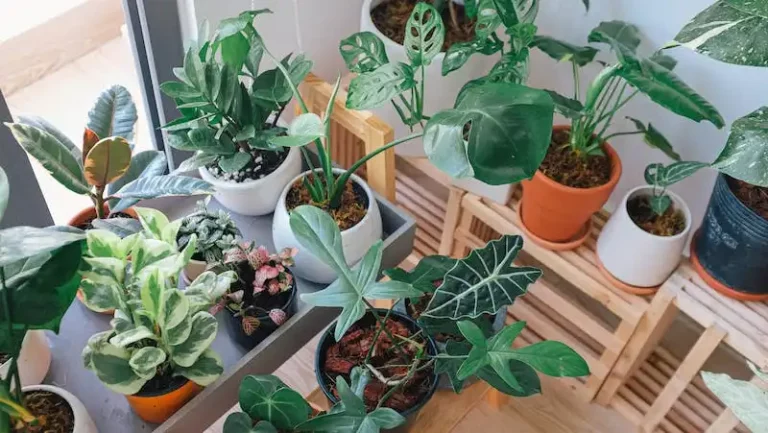Miniature roses are a popular gift choice for Valentine’s Day, as they symbolize love and beauty in a compact package. If you have received one of these delicate flowers, it’s important to know how to properly care for it to ensure it thrives and continues to bring joy. Follow the guidelines and tips below to give your miniature rose the best care possible.
First and foremost, select the best spot for your miniature rose. These plants need at least six hours of direct sunlight each day to thrive, so a sunny window is ideal. If you live in a colder climate where frost is a concern, it is best to keep the rose indoors until late spring when the frost has passed. It is important to note that these roses can also be grown outside, either in containers or as part of a garden. If you choose to grow it outside, make sure the spot receives enough sunlight and has well-drained soil.
When it comes to watering, miniature roses have similar needs to their larger counterparts. They prefer to be watered deeply but infrequently, so it’s best to let the soil dry out slightly between waterings. To keep the soil moist, you can add some little pebbles to the bottom of the pot for extra drainage. Additionally, when watering, try to avoid wetting the foliage as this can lead to disease and pests. If you notice any pests or diseases on your rose, it is best to consult with a horticulturist or refer to a plant care guide for further advice.
Fertilizing is another important aspect of caring for your miniature rose. It is recommended to use a balanced rose fertilizer with an N-P-K ratio of 10-10-10 every four weeks during the growing season. This will ensure that the rose receives the necessary nutrients for healthy growth. Additionally, make sure to follow the instructions on the fertilizer packaging for the best results.
One characteristic of miniature roses is their versatile growth habit. They can be grown as bushy plants, climbing roses, or even trained as small trees or shrubs. To maintain their desired shape, it is important to prune and shape them regularly. This should be done in early spring before new growth starts. Inspect the rose for any dead, damaged, or diseased wood and remove it with clean, sharp pruning shears. Pruning will stimulate new growth and result in a more compact and beautiful plant.
Mini Roses
Mini roses are smaller scaled roses that make beautiful additions to any garden or indoor space. With their petite size, they can be grown in containers and placed in various spots to create a stunning display.
When caring for mini roses, it is important to provide them with the right conditions and follow proper care instructions. Mini roses need lots of sunlight to thrive, so select a spot in your garden or inside your home that receives at least 6 hours of sunlight a day. They also require well-draining soil that is rich in organic matter.
Watering is another crucial aspect of caring for mini roses. Keep the soil moist but not overly wet, as overwatering can lead to root rot. A good solution is to water the roses deeply and then allow the soil to dry out slightly before watering again. During the summer months, when the temperatures rise, mini roses may need more frequent watering.
In terms of pests and diseases, mini roses can be susceptible to the same problems as their larger counterparts. Aphids, spider mites, and black spot are common insects and diseases that can affect mini roses. Monitor your plants regularly and take action at the first sign of any pests or diseases. There are various organic and chemical solutions available for controlling these issues.
Mini roses are known for their continuous bloom throughout the growing season. To encourage more blooming, deadhead the faded flowers regularly. This will also prevent the plant from wasting energy on seed production. Fertilize mini roses every two weeks during the growing season with a balanced rose fertilizer according to the package instructions.
If you received a miniature rose as a gift, make sure to transplant it into a larger pot or plant it in your garden as soon as possible. Mini roses are not indoor plants, so they will not thrive inside for a long time. However, if you want to keep them indoors temporarily or use them for decorating mini bouquets, place them near a sunny window and follow the care instructions mentioned above.
Mini roses come in a variety of colors and qualities, and selecting the right one for your garden or indoor space is important. They can either be bushy or climbing varieties. Carefully choose the characteristics and qualities that best suit your needs and preferences. Some popular mini rose varieties include “Sweet Spot” and “Miniature”.
Overall, mini roses are delightful and versatile plants that can bring beauty and charm to any garden or indoor space. With proper care and attention, they can bloom happily and add a touch of elegance to your surroundings.
I received a miniature rose for Valentine’s Day. How do I care for it?
Miniature roses are adorable and make a perfect gift for Valentine’s Day. While they may be small in size, they still require proper care to thrive and bloom. Here are some tips on how to care for your miniature rose:
Placement and temperature:
Place your miniature rose in a location where it can receive at least six hours of direct sunlight each day. They’re not too fussy about temperature, but they prefer a range of 65-75°F (18-24°C). Avoid exposing them to extreme heat or cold.
Water and soil:
Water your mini rose thoroughly until the water drains out of the bottom of the pot. Allow the soil to dry slightly between waterings, but don’t let it completely dry out. Make sure to use well-draining soil to prevent root rot.
Light and humidity:
Miniature roses love bright light, so placing them near a south or west-facing window is ideal. They also appreciate a slightly higher humidity level, so misting the leaves occasionally can help, especially during the dry winter months.
Growth and blooming:
Miniature roses are compact bushes that can grow up to 24 inches (60 cm) tall. They can bloom throughout the year, but they tend to have more intense blooming periods in the spring and early summer. To encourage more blooms, you can deadhead the faded flowers and prune the stems to promote new growth.
Indoor and outdoor care:
If you want to keep your miniature rose indoors, make sure to rotate the plant every few weeks to ensure even growth. If you decide to plant it outside, do so when the danger of frost has passed. Keep in mind that outdoor roses may grow larger than indoor ones and will require different care.
Pest control and leaf inspection:
Inspect the leaves regularly for any signs of pests or diseases. Aphids, spider mites, and black spot are common issues with roses. If you notice any pests or spots, take immediate action to control them. There are various organic and chemical methods available for pest control.
Follow these 13 steps to care for your miniature rose, and you’ll have a gorgeous and thriving plant in no time. Enjoy the beauty and sweet fragrance it brings to your home or garden!
Light Requirements
Miniature roses require a good amount of sunlight to thrive. When growing them indoors, it is important to place them near a window where they can receive adequate sunlight. In Ohio and other northeast regions, where winters can be harsh, it might be necessary to bring the plants indoors or place them on a patio where they can still receive sunlight.
For the best possible light conditions, place your miniature roses outside during the late spring and summer months. However, be mindful of their watering needs and inspect them regularly for any signs of pests or diseases. If you notice any deadheading, be sure to remove it to promote healthy growth.
When buying miniature roses, you may find different varieties available, such as grandiflora and floribunda. The light requirements may vary slightly for these different types, so it is important to consult a horticulturist or a plant care guide specific to the variety you have.
Overall, providing ample sunlight and creating a suitable environment for your miniature rose bushes, whether indoors or outdoors, is crucial for their growth and well-being.
Watering
Proper watering is essential for the health and longevity of your miniature rose plant. These grandiflora roses, just like their larger counterparts, require regular and consistent watering to thrive.
Before watering, always check the moisture level of the soil. Stick your finger about an inch deep into the soil; if it feels dry, then it’s time to water. Miniature roses typically need to be watered more frequently than standard-sized roses because their smaller root systems cannot hold as much water.
When watering, be sure to thoroughly saturate the soil until water begins to drain out of the bottom of the pot. Ensure that your rose is in a well-drained container or planted in well-draining soil. This will prevent waterlogging and root rot, which can be detrimental to the plant’s health.
The frequency of watering will depend on various factors, such as the temperature, humidity, and the size of the container. In general, miniature roses require more frequent watering during hot summer months. As a rule of thumb, water them twice a week. If the weather is exceptionally hot, increase the frequency to three times a week.
When watering, try to avoid wetting the leaves as much as possible, as excess moisture on the foliage can lead to fungal diseases. Instead, direct the water towards the base of the plant, taking care not to splash water onto the leaves. If you notice any signs of disease, such as black spots or powdery mildew, consider spraying the plant with a fungicide. Regularly inspect your miniature rose for pests, and address any issues promptly.
Miniature roses can be grown either indoors or outdoors. If you choose to place your miniature rose indoors, make sure it receives sufficient light. Place it near a window where it can receive at least 4-6 hours of direct sunlight per day. Rotate the plant regularly to ensure even growth.
If you plan to keep your miniature rose outdoors, find a location that offers full sun, preferably in the morning. The northeast side of your patio or a spot with morning shade and afternoon sun would be perfect. These roses are quite tolerant of Ohio’s climate but may need additional protection during winter. Consider moving them inside when the temperature drops below 20°F (-6°C) and provide them with enough humidity to offset the drying effects of indoor heat.
With the proper care and watering, your miniature rose will reward you with its sweet fragrance and beautiful blooms throughout the growing season.




